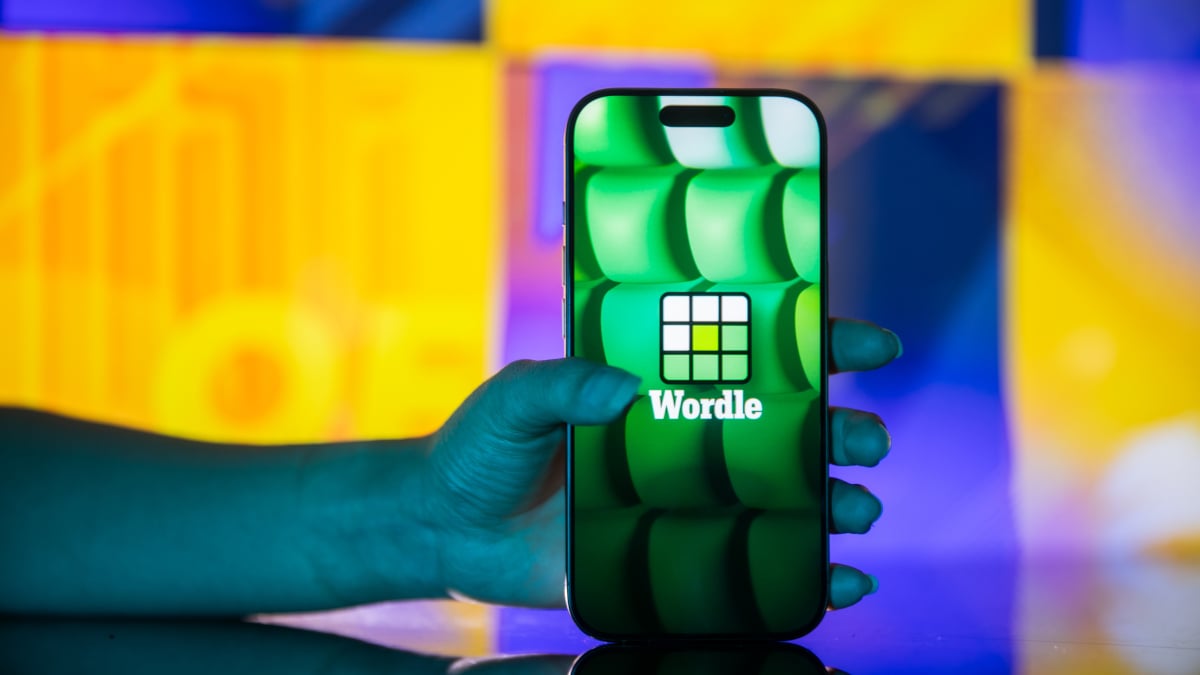Entertainment
Four actions to reduce social media risks for your child

You’ve heard the outrage, you’ve read the reports, and you’ve seen the headlines: social media may be harming your child. What now? You gave your child a phone years ago and nothing short of the jaws of life could extract that thing from your kid’s grip now. You’d like to keep your child safe, but it’s a tug of war between you and an industry that has thousands of brilliant minds, and has invested billions of dollars, just to keep your child online as long as possible. You feel hopeless, guilty, exhausted, and maybe even angry.
I get it. I have done research on technology and adolescent mental health for 25 years, delivered hundreds of presentations of our findings to parents, schools, state legislative offices, and even to the Senate and at the White House. In fact, I am writing this piece on a flight back from Switzerland, where I presented at the World Economic Forum in Davos among dozens of companies unveiling even more sophisticated versions of AI-driven platforms that are designed to occupy our children’s attention for even more hours per day.
I am well aware of the potential benefits and harms of social media. But I am also a parent of two teenagers. I talk about this research all day, and then I spend each evening engaged in that same tug of war. It is almost impossible to raise a child today when tech titans have as much influence as parents in guiding our kids’ behavior.
But they haven’t won yet. You are still your child’s parent, and you still have tremendous power.
Here are four relatively easy things you can do today to help guard your children from the most dangerous risks on social media. Note – it’s best if you can do each of these thingsalong with some friends; we have added power when we work together as parents to create a united front, so our children don’t feel like they are the only ones with different rules for using tech.
Create tech-free zones in your child’s life
Your child will never admit this to you, but our research shows: Kids actually want limits on their device, but they want to be able to blame their parents or schools for “having to log off now.” Do them a favor and help them get some tech-free time. Research shows that about 50% of kids report at least one symptom of clinical dependency on social media (i.e., they can’t stop even when they want to), and in our work with college-aged students, about the same percent tell us that they wish their parents had not given in to them when they asked (begged?) for a phone at age 12.
You can do this in several ways:
Mashable Top Stories
• Use parental controls to set up “downtime” or “sleep time” on your child’s device for periods throughout the day. “Sleep” mode will often even post a label so your child’s friends will understand why they are not writing back. You can shut down devices during the day, too. When your child has friends over, tell their parents not to bring the devices along – make it a tech-free playdate. Same for sleepovers, and ask instructors or coaches for extracurricular activities to apply the same rule.
• Adolescence is the second most important period in our lives for brain development behind the first year of life; eight to nine hours of sleep a night is absolutely mandatory. Make a house rule that all devices are shut off and put away at 10 p.m. on a school night (yours, too!). Remember when it was rude to call someone after 10 p.m.? Time for us to set that norm again. I know this can be hard to enforce, but scientific studies show that social media use is the number one reason for teens’ delayed sleep start and disrupted sleep, both of which have significant implications for how large your child’s brain grows in adolescence, and how well it functions. Tech titans may be able to get our kids to spend more time online than we would like, but we should absolutely refuse to let them affect how large our children’s brain will grow.
• Tell your school district that you want phones out of the classroom for instructional time (go to joinmama.org for resources).
Visit the app store with them
When I speak to middle and high school students, I conduct a simple exercise. Open the app store. Type in the name of your favorite social media platform. Now scroll down. Keep scrolling. There it is: the “Privacy” section. There’s a list of all the data the companies are collecting from your device once you download the app. This is the moment that the kids’ jaws drop, and their hands raise dramatically. “Wait, my internet searches are being sent to the company? My location? My contact list? My payment method?!” Yep. “Hold on, is this only when I am using the app?” Nope – it is everything you do from the moment you download the app and accept its terms. “What if my profile is set to ‘private’?” Doesn’t matter – that only affects what other users see. The company gets all your data no matter what. “Hey, if they are selling my data, do I get a cut of the profits?” Oh, bless your heart, no, you do not. Try this exercise at home. Create the space for an educated child to become a wise decision-maker for themselves.
Talk, talk, talk
Our research shows: Your kids will be exposed to content that teaches them how to engage in disordered eating behavior, how to cut themselves and hide it from their parents.They will see live suicide attempts and drug use among teens, they will see hateful and discriminatory posts against others based on their race, religion, or identity. They will be encouraged to “like” or “repost” this content, and for many, this content will make them more likely to engage in the same behavior themselves. Don’t wait for your child to volunteer that they saw this content. Talk to them about it, assuming that they have already seen or will soon see it. “Why do you think people posted that content? What would you do if you saw someone from your school posting that content? Why do you think some people “like” that content? Have you ever thought about doing some of the things you saw in those posts?”
Look at yourself
The world has been discussing the effects of tech on youth. But here’s a hard truth that folks don’t want to say out loud: It’s not just youth. Do you ever spend more time on your device than you would like? Ever pick up your phone to check a quick message only to scroll for way longer than you expected? Ever get excited about how many likes your post got? Your child is watching you. Research on “technoference” even shows that toddlers are jealous that you may spend more time looking at your phone than at them. Here’s a tough pill to swallow: We are complicit every time we show our kids that notifications must be answered immediately, that posts with many “likes” are to be celebrated, that people’s opinions matter just because they have many followers, or that scrolling on our phone is more exciting to us than watching our children play on the field.
The fact is – we are part of this, too, so let’s all be part of the solution together. Have a tech-free dinner with the family while leaving all devices in the other room. Maybe a tech-free hike, or device-less stop for frozen yogurt as a group. And here’s the important part: Talk about how hard this is for you, too. Discuss with your child how you cope with missing your phone. Discuss how it’s natural to worry that we may be missing out on a juicy new development online. Then discuss why your family values some tech-free time to make genuine human connections. Talk with your kids about how you develop emotional intimacy with friends so they can learn that there are relationships to be had that make us less lonely, as compared to the incessant scrolling of “friends’” profiles or the collection of followers that seems to increase loneliness. As hard as it is to acknowledge that we have been hooked, too, we must practice what we preach.
“I’m exhausted.”
Maybe you are far too busy to follow the tips suggested here. That’s fair. How many of us actually have time for deep conversations with our teenagers these days? And let’s be honest, the longer the kids are on screen, the easier it is for us to find time to do what we need to feed them fed, keep them in clean clothes, and give ourselves an occasional, needed break. That’s OK. Don’t beat yourself up for just making it through the day. Maybe instead of following all of the steps here, just try one. Maybe just once. Or maybe just start a conversation with another parent and compare notes on how they are managing this. Even the smallest steps forward can help change begin. I’m sad to say, although parents have the least time and energy to fix this issue, it may be up to us to do so.
You are not alone. We can make this change if we decide to do it together. Let’s not blame our kids, or each other, when we fail to resist the urge to look at our phones. Let’s support, commiserate, and share tips on what we have found that can help. And let’s use the most powerful tool we have – our collective power as parents. It was parents who made designated drivers “a thing.” We fought back against companies trying to make tobacco look cool to kids. We pushed back against those making a profit by putting sugary snacks and drinks in our kids’ schools. And we can do this! Demand that parental controls are easier to set. Select products that prioritize child safety. Abandon companies that advertise on platforms with the weakest protections for youth, and support nonprofit groups that advance a tech-healthy youth agenda. We are the market that tech companies need to survive, and your child has the data they want to make a profit. We may feel helpless in the struggle to keep our kids safe, but there may be some small things we can do today and some big things we can do together to save a generation from risk.
Mitch Prinstein, PhD is the chief of psychology for the American Psychological Association.
Entertainment
Best Mothers Day gifts: Show mom some love

Mother figures are the backbone of the world. Yours may be your biological mother, or maybe she’s your mother-in-law, your best friend’s mom, or simply someone whose motherly instinct has helped you through hard times.
Moms teach you the adulting necessities, give advice even if the problem is your fault, and above all, they put up with your shit and (almost) never complain.
The game plan here isn’t just to snag the last bouquet at CVS just so you’re not the kid who forgot Mother’s Day (but definitely also get flowers). And you don’t even need to spend a lot of money. (Peep our list of Mother’s Day gifts that cost less than $50. Want even more cheap gift ideas?
Skip the generic mugs and show your appreciation with a gift picked just for her: Whether it’s something to make a part of her life easier, something she’s mentioned wanting in passing, or simply something to make her feel like a damn queen, you can’t put a price on everything she’s done for you, but heartfelt gifts certainly help.
After all, they say “No matter how hard you try, you always end up like your mother.” But is that even a bad thing?
Entertainment
Ban subscriptions and get Microsoft Office 2024 for life for just £121

TL;DR: Grab Microsoft Office 2024 Home and Business for PC or Mac for just £120.54 through June 1.
You wouldn’t keep paying for Netflix if you could own your favorite shows, right? So why are you still subscribing to Office apps you use every day? Microsoft 365’s price keeps going up, but there’s finally a way to break free — and it’ll cost you way less in the long run.
Microsoft Office 2024 is the answer you’ve been looking for. Instead of monthly payments, simply pay £120.54 once and be set for life (reg. £188.37). It’s that simple. And, yes, this lifetime download works for PC or Mac.
What’s included?
This license comes with:
-
Word
-
Excel
-
PowerPoint
-
Outlook
-
OneNote
The newest version of Microsoft Office is a little different from Microsoft 365. But just because you’re switching to a lifetime license doesn’t mean you’ll miss out on some of the most recent updates. Word and Excel both still have AI integrations for text suggestions and smart data analysis, and PowerPoint still has improved tools for recorded presentations.
Once you’ve redeemed your purchase, you can install your apps on one computer. After that, they’re yours to use however you want. No more subscription fees or sudden price hikes to worry about.
Why rent when you can own?
Mashable Deals
Get a Microsoft Office lifetime license on sale for £120.54 with no coupon needed.
StackSocial prices subject to change.
Entertainment
Wordle today: Answer, hints for May 9, 2025

Oh hey there! If you’re here, it must be time for Wordle. As always, we’re serving up our daily hints and tips to help you figure out today’s answer.
If you just want to be told today’s word, you can jump to the bottom of this article for today’s Wordle solution revealed. But if you’d rather solve it yourself, keep reading for some clues, tips, and strategies to assist you.
Where did Wordle come from?
Originally created by engineer Josh Wardle as a gift for his partner, Wordle rapidly spread to become an international phenomenon, with thousands of people around the globe playing every day. Alternate Wordle versions created by fans also sprang up, including battle royale Squabble, music identification game Heardle, and variations like Dordle and Quordle that make you guess multiple words at once.
Wordle eventually became so popular that it was purchased by the New York Times, and TikTok creators even livestream themselves playing.
What’s the best Wordle starting word?
The best Wordle starting word is the one that speaks to you. But if you prefer to be strategic in your approach, we have a few ideas to help you pick a word that might help you find the solution faster. One tip is to select a word that includes at least two different vowels, plus some common consonants like S, T, R, or N.
What happened to the Wordle archive?
The entire archive of past Wordle puzzles was originally available for anyone to enjoy whenever they felt like it, but it was later taken down, with the website’s creator stating it was done at the request of the New York Times. However, the New York Times then rolled out its own Wordle Archive, available only to NYT Games subscribers.
Is Wordle getting harder?
It might feel like Wordle is getting harder, but it actually isn’t any more difficult than when it first began. You can turn on Wordle‘s Hard Mode if you’re after more of a challenge, though.
Here’s a subtle hint for today’s Wordle answer:
Gibberish.
Mashable Top Stories
Does today’s Wordle answer have a double letter?
There are no recurring letters.
Today’s Wordle is a 5-letter word that starts with…
Today’s Wordle starts with the letter T.
The Wordle answer today is…
Get your last guesses in now, because it’s your final chance to solve today’s Wordle before we reveal the solution.
Drumroll please!
The solution to today’s Wordle is…
TRIPE.
Don’t feel down if you didn’t manage to guess it this time. There will be a new Wordle for you to stretch your brain with tomorrow, and we’ll be back again to guide you with more helpful hints.
Are you also playing NYT Strands? See hints and answers for today’s Strands.
Reporting by Chance Townsend, Caitlin Welsh, Sam Haysom, Amanda Yeo, Shannon Connellan, Cecily Mauran, Mike Pearl, and Adam Rosenberg contributed to this article.
If you’re looking for more puzzles, Mashable’s got games now! Check out our games hub for Mahjong, Sudoku, free crossword, and more.
Not the day you’re after? Here’s the solution to yesterday’s Wordle.







